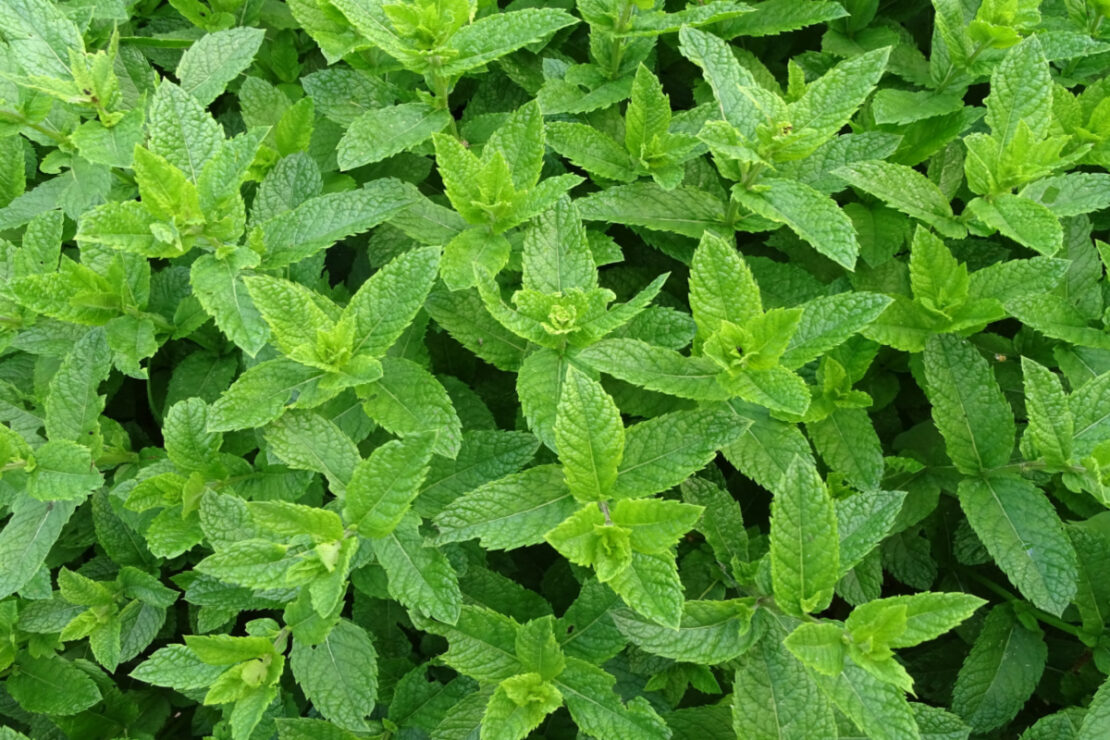
4 Options for Herbal Ground Cover
An herbal ground cover is a great option for gardeners looking to fill empty space in their garden beds or fill patches in the yard where grass has a difficult time growing. Some people even grow ground covers as an alternative to traditional grass lawns, which require heavy watering and feeding to maintain.
Ground covers give you a lush green carpeting like grass would, and some produce flowers that transform the green carpet into a blooming meadow. These plants can help to protect soil from erosion and sun bleaching, act as weed deterrents, and help keep moisture in the soil. Herbal ground cover plants not only look great, but they are also useful.
Keep in mind that ground covers are not the same thing as cover crops. Cover crops are a living mulch that adds nutrients to the soil as it grows. Cover crops are typically annuals that are planted for one season or when a plot is left fallow. Ground covers, on the other hand, are creeping, perennial plants that will spread and stay in place for years at a time(Beaulieu, 2019).
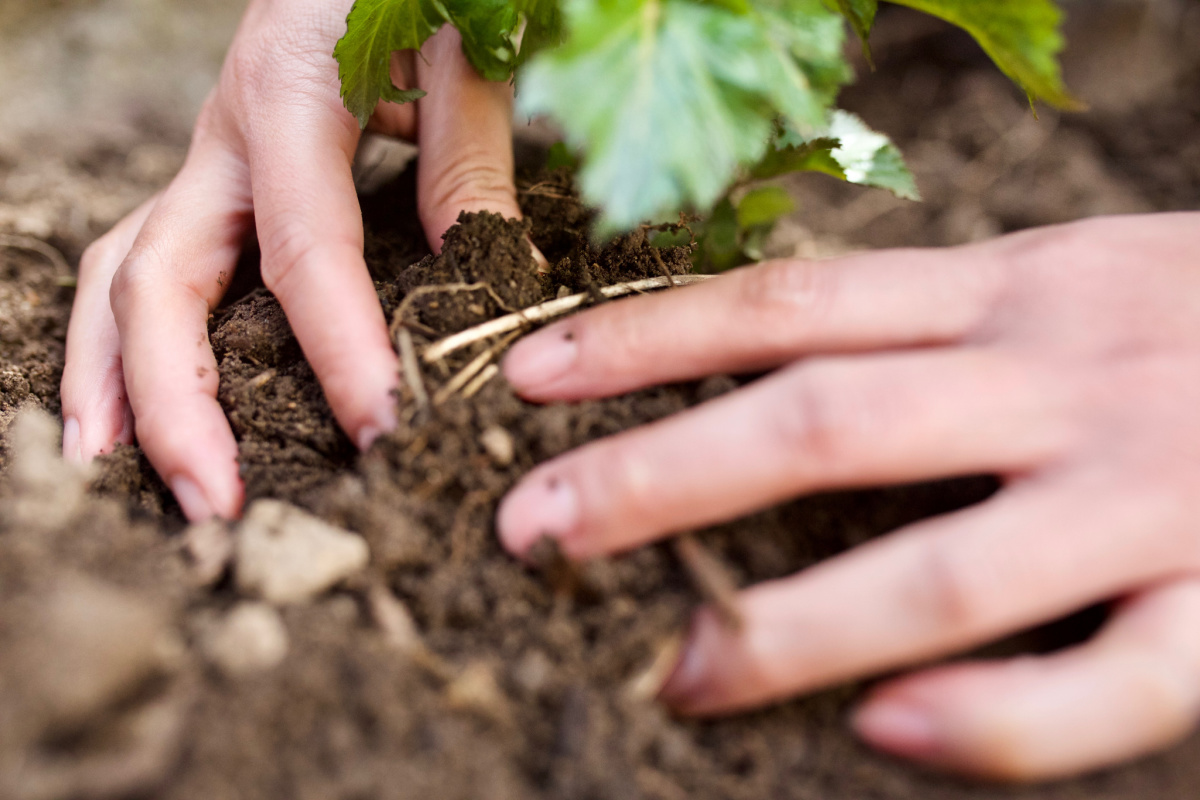
A Plant for Every Place, a Place for Every Plant
Choosing the right ground cover for your space will depend on your climate and resources, and how much work you are willing to do to alter the natural environment. Some choices for altering your environment are simpler than others. For example, watering regularly is more accessible to most than altering how much sun or shade you have in your space.
There are several things to look at when choosing the best herbal ground cover for your environment.
Hardiness zone. You’ll want to compare the compatibility of the hardiness zone in which you live with the hardiness zone of the plant you plant to bring in. Hardiness zones, drafted by the United States Department of Agriculture (USDA), consider the average temperature range in an area to determine if a plant suits the environment (United States Department of Agriculture, 2012). It is important for the plant to be comfortable so it will make itself at home.
Soil type. There are plants for every environment humans live in, so there’s sure to be a plant that’s compatible with your yard or garden. Just like us, plants like their homes a certain way. Considering what type of soil you have will help you choose a plant that wants to live in that space. Is your soil sandy, loamy, or clay-heavy?
The easiest way to get an idea of what type of soil you have is to pick up a handful of moist earth and squeeze it in the palm of your hand. If it doesn’t clump at all, then there is a higher percentage of sand. If the soil comes together and then easily crumbles, you have loamy soil. Should the soil clump and bind, then there is a higher percentage of clay.
Sun and water. The amount of sun a plant needs is another crucial consideration. You don’t want to plant a ground cover that needs full sun under a shade tree in your yard. Also, consider how much water the plant will need. Planting a water-loving ground cover around plants that need time to let their roots dry in between watering will end poorly for one of the two.
The following is a short list of plants that make a beautiful herbal ground cover when planted with the above considerations in mind.
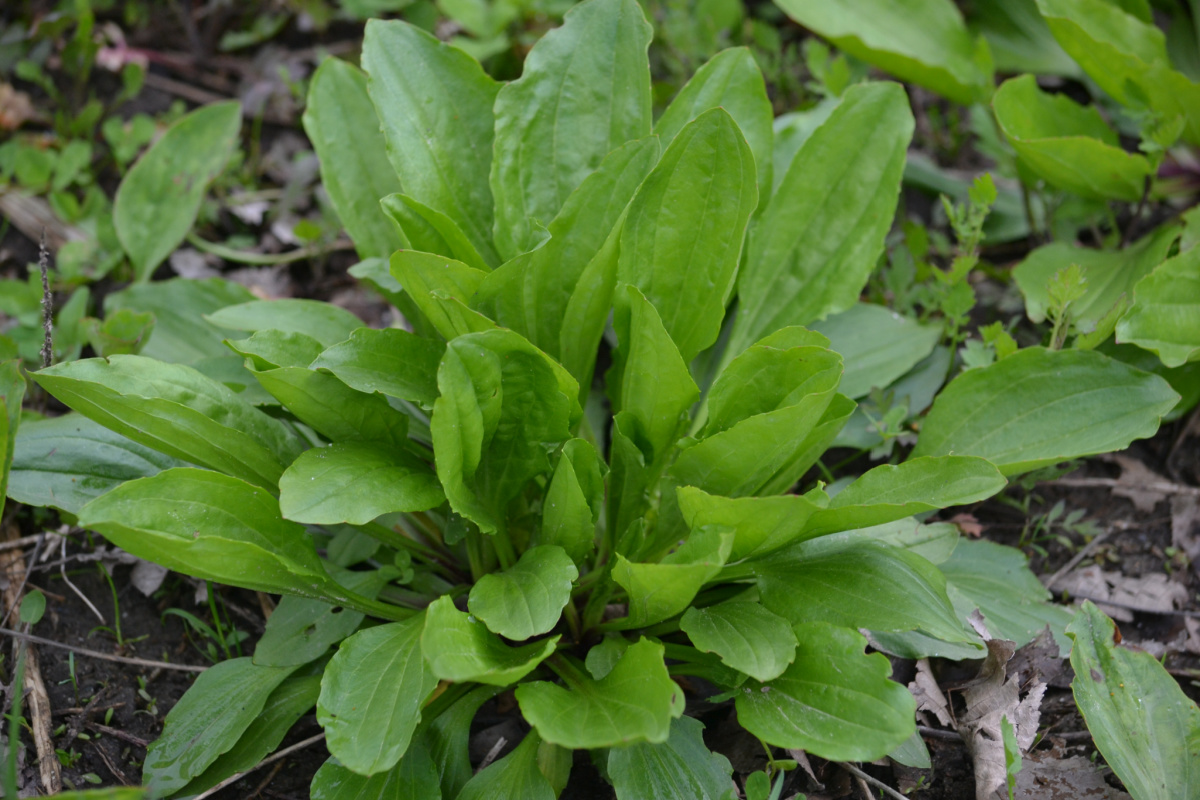
Plantain (Plantago spp.)
Plantain (Plantago spp.) is a fantastic plant to use as ground cover no matter what part of the world you live in. Though it does share a common name with the firm green banana that grows in tropical regions of the world, they are not the same plant. Originating in Eurasia, the plantain used for ground cover made its way around the world as European nations sought to colonize new lands (College of Food, Agriculture, and Environmental Sciences, n.d.).
Plantain is a very versatile plant and can live in any environment from hardiness zone 3-12 (Plants for a Future, n.d.c). It can grow in almost any soil condition—as long as the earth isn’t soggy—and prefers areas that receive full sun to partial shade (College of Food, Agriculture, and Environmental Sciences, n.d.). Because it’s so hardy and common, plantain is often seen as a “weed.” However, to the initiated herbalist and gardener, plantain is a welcome addition to both the apothecary and the garden.
Plantain can withstand regular disturbance, like mowing and trampling, which makes it a good ground cover option in lawns or areas that will receive foot traffic (College of Food, Agriculture, and Environmental Sciences, n.d.). Directly seed plantain and thin to 4-6 inches to prevent overcrowding as the plants grow. Mature plants will self-seed, replenish the population, and maintain ground cover as time goes on.
Because of plantain’s ability to self-seed so easily, this herbal ground cover can move to other areas of your yard or garden by hitching a ride on the mud on your boots, or by birds disbursing the seeds. It will happily make a home anywhere it comes into contact with disturbed soil, and can intermingle with grasses in your lawn.
The roots are mostly fibrous with a short taproot, making them unproblematic neighbors for plants whose roots reach deep into the soil. Plantain leaves grow in a basal rosette. Mature leaves are leathery in texture and grow up to 12 inches tall. The flowers of this plant, made for function not fashion, arrive in narrow spikes at the end of the flower stem (College of Food, Agriculture, and Environmental Sciences, n.d.).
Plantain is happy to make itself useful in your home apothecary. The fresh leaves crushed or chewed, are applied as a poultice to insect bites, cuts, or burns to cool inflammation (Wall Kimmerer, 2013). The young leaves make a good potherb to add to culinary dishes, like salads or smoothies. Containing both mucilaginous and astringent properties, plantain is toning as well as soothing to the tissues of the digestive system and a good ally for those with digestive complaints (Chevalier, 2000).
The fresh or dried leaves can be taken as an infusion to help soothe digestive complaints, respiratory congestion, and urinary bleeding. Externally, the infusion can be used as a wash or compress for irritated or injured skin. Infused into oil, the leaves make an excellent addition to soothing plantain salves for cuts, ulcers, and even hemorrhoids (Chevallier, 2000).
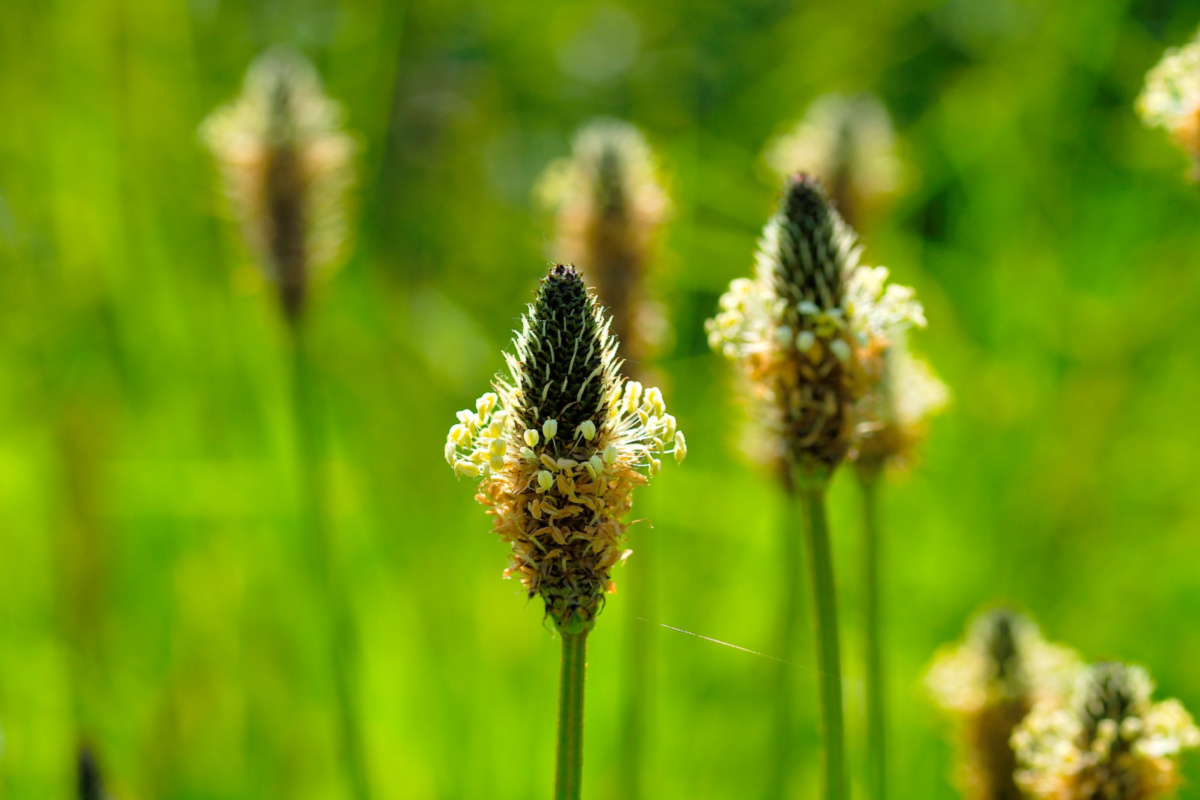
Mature seeds of plantain, known as psyllium, are a fiber supplement. When combined with water, long-chain sugars in the seeds form a jelly-like consistency similar to flax or chia seeds. The jelly is demulcent, meaning it soothes the internal tissues it comes into contact with, and is equally useful whether things are moving too quickly through the digestive tract (diarrhea) or too slowly (constipation). This mucilage also has the ability to absorb toxins in the large intestines, and carry them out of the body through the process of elimination (Chevallier, 2000).
Harvest plantain leaves throughout the growth cycle; however the young leaves are best for eating. To harvest the leaves, use scissors to cut the short stem below the broadleaf. Harvest individual leaves from the outer portion and leave the inner leaves to allow the plant to continue its growth. Use leaves fresh or lay them flat to dry. Store dried plantain leaves in their whole form, in a cool place, and away from light to preserve the constituents until you are ready to use.
Allow the seeds to dry on the flower stem before harvesting for use. The seeds are mature once the flower head and stem have turned brown. Use scissors to cut the flower stem close to the base of the plant, as the dried and hardened flower stems become pokey if left on the plant. The seed willingly parts from its capsule if you place dried seed heads in a paper bag and knock them around a bit. Leave the seeds exposed to air for a few days to ensure they are completely dry before storing in an airtight container.
Learn more about the many uses for this lovely herbal ground cover in:
Creating a Local Materia Medica with Plantain (+ Plantain Salve Recipe)
Plantain for Bee Stings
Plantain: Herbs We Love for Summer
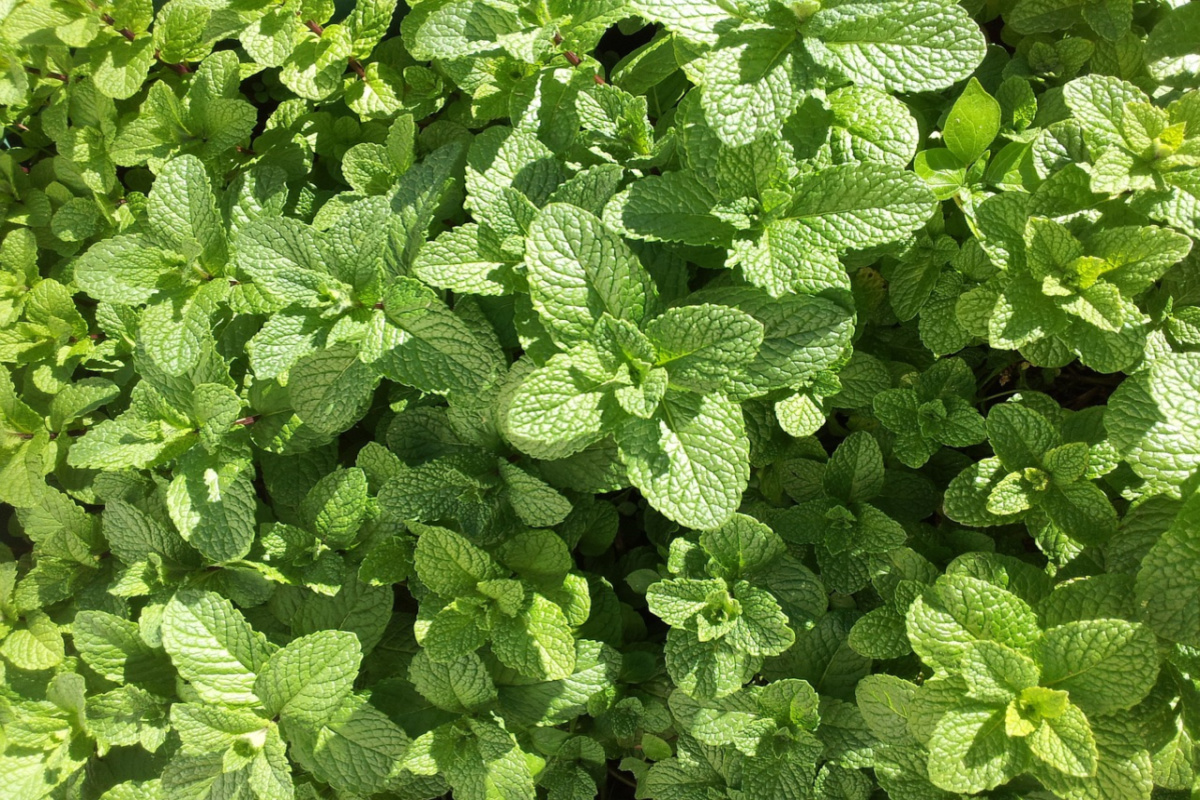
Mint (Mentha spp.)
Mints (Mentha spp.) are hardy and aggressive spreaders that have little preference for the type of soil they grow in, as long as there is adequate moisture. Mints can be happy growing in the shade or sun in hardiness zones 3-9 (Hartung, 2011; Plants For A Future, n.d.b). Because they’re shade-tolerant, mints are a good option for growing under trees or near a tree line where grasses may have difficulty growing.
Hardy mints withstand foot traffic as well as mowing, and the plant will lend its sweet and invigorating scent to the air when disturbed. As an herbal ground cover, mints will gladly take over whatever space is available to them. Mints do not make nice neighbors and will quickly out-compete less aggressive neighbors for space. It is best to plant mint in the ground where you want the plant to take over.
Mints are able to spread themselves quickly and stealthily through a system of underground runners. These runners create a kind of underground net that helps keep the soil in place. This feature makes mint varieties an excellent choice for places where soil stabilization is needed, like a hill or slope (Grant, 2020).
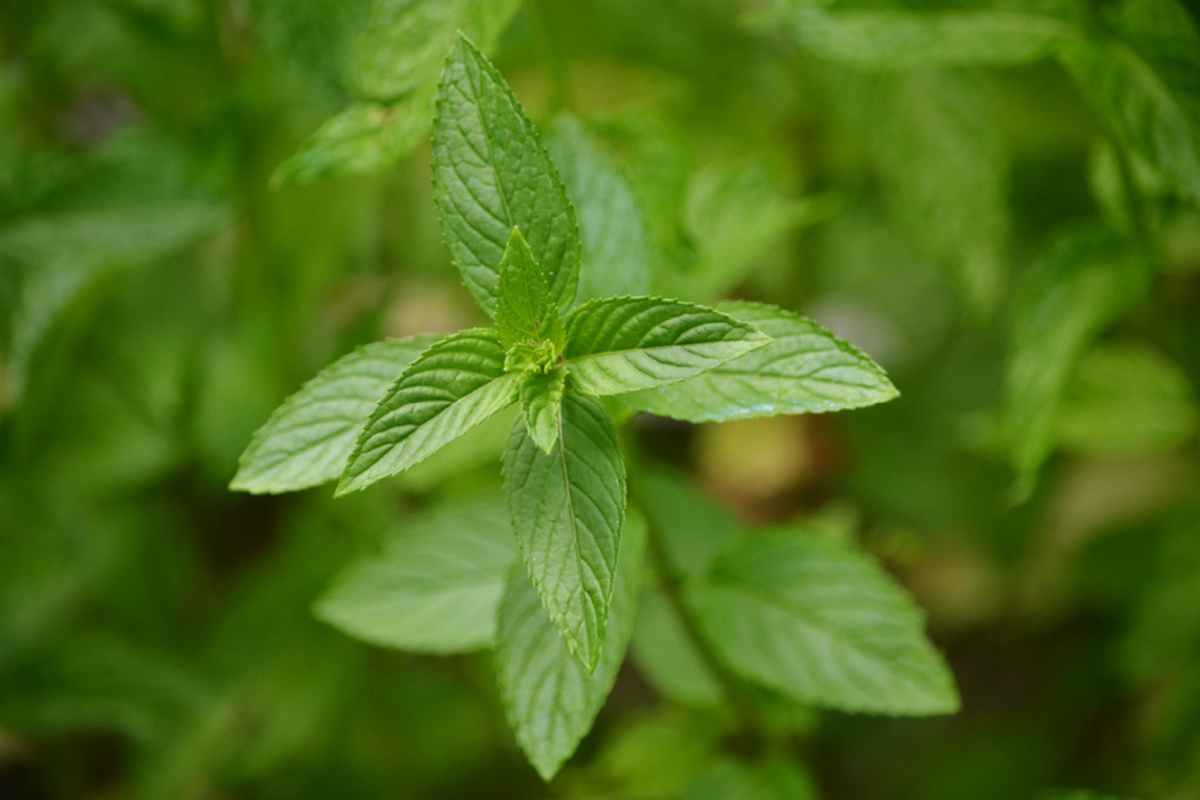
The many varieties of mint mean there are options depending on how tall you’re looking for your ground cover to become. Peppermint (Mentha x piperita) and spearmint (Mentha spicata), for example, have the potential to grow up to 2 feet in height, but their cousin Corsican mint (Mentha requienii) only grows up to 4 inches tall (Grant, 2020; “Where and how to grow an herbal groundcover,” n.d.). The earlier two can form a low-growing mat when maintained with regular mowing, and the latter will do so on its own.
Mint should be moved into your space by the use of root cuttings or starter plants, rather than by directly seeding. Mint plants started from seed are not as strong in their virility, taste, or scent, and will take longer to establish and spread. Place root cuttings or starters in the ground 12 inches apart and they will quickly grow together to fill the space between (Hartung, 2011). To keep the foliage looking its best, trim, mow, or weed wack the flowers when they appear.
Most members of the mint family are edible and have positive effects on the human system. The leaves of the three varieties discussed in this article (peppermint, spearmint, and Corsican) are edible fresh or dry. Tea made from the leaves helps to settle the stomach and uplift the spirit. These plants are also able to assist the body in cooling itself by promoting perspiration, which can be useful in cases of low fever or when coping with the heat of summer (Plants For a Future, n.d.b).
The leaves are also useful when blended with other herbs that have an unpleasant scent or taste in making tea blends and syrups. Use fresh or dry leaves to create bath teas or herbal steams for inhalation. When combined with other herbs in a salve or cream, mints add a cooling sensation. Mints are just as versatile in application as they are in growth range.
Use scissors or shears to harvest mint at any time in its growth cycle. Harvesting the leaves before the plant flowers will give you a sweeter mint (Hartung, 2011). Flowering mints can become spicier or earthier as the plant energy moves from the leaves to the flowers. Use fresh or lay the cuttings flat to dry. Once dry, store in an airtight container until ready to use.
Learn more about how to grow and use this versatile herbal ground cover in:
A Family Herb: Amazing Mint
Valerian Mint Cordial: The Perfect Herbal Nightcap
4 Tips to Control Mint in the Garden
Refreshing Monarda-Mint Ice Pops
Cooling Cucumber Mint Limeade for Hot Summer Days
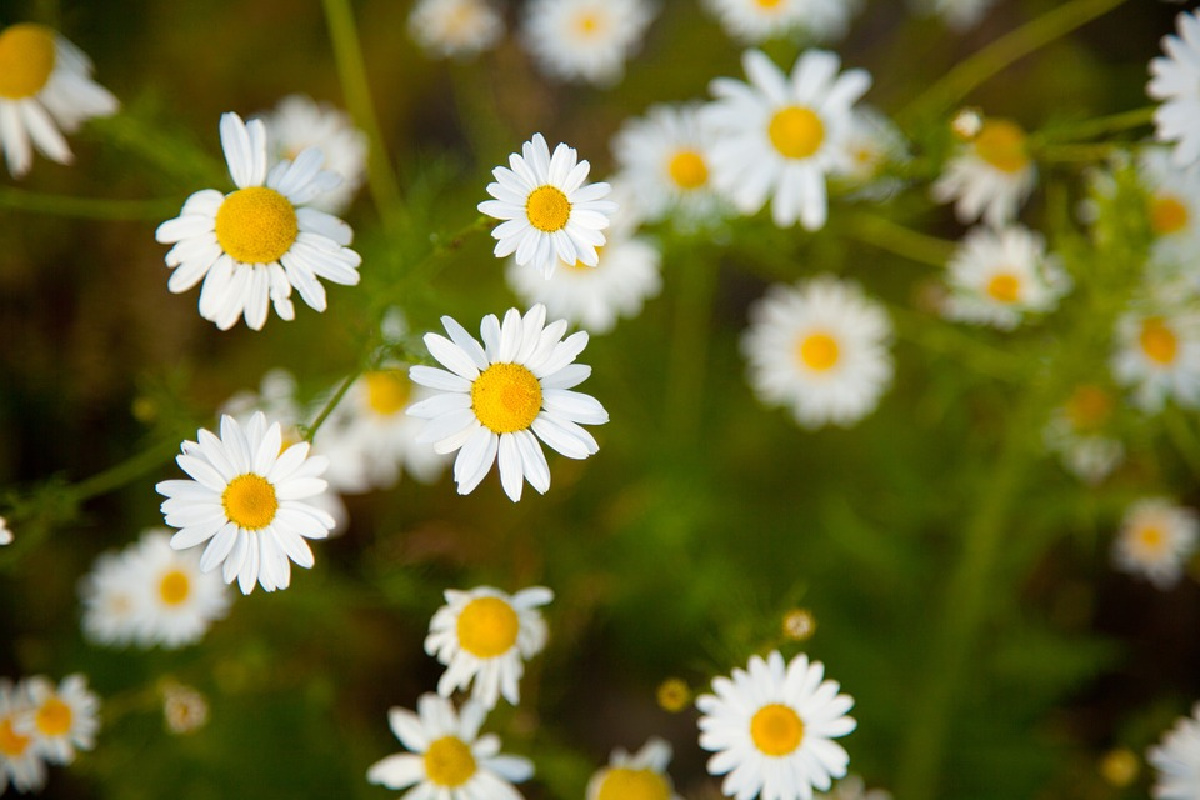
Roman Chamomile (Chamaemelum nobile)
Roman Chamomile (Chamaemelum nobile) makes a good pick for herbal ground cover in a sunny spot with well-drained soil. It can thrive in hardiness zones 4-9 as long it gets regular watering (Hartung, 2011). Plant amongst stepping stones for a whimsical garden pathway, or in a sunny bed for the best result.
Although young plants will need tenderness as they establish themselves in the garden, they can tolerate being walked on and mowed down in maturity (“Where and how to grow an herbal groundcover,” n.d.). Like mint, this plant is fragrant. The light apple scent will perfume the air when disturbed and makes Roman chamomile a lovely mat for a garden nap.
Roman chamomile is easy to start from seed, but the cost of seed and its 40-60 percent germination rate makes starting this plant from root divisions or starter plants a more cost-effective option. Place plants 8 inches apart and the rhizomatous root system of Roman chamomile will allow it to spread itself around and fill in the space between starters over time (Hartung, 2011).
Plants can reach up to 10 inches in height before they bloom (Hartung, 2011). The leaves of Roman chamomile are feather-like, similar to those of German chamomile (Matricaria chamomilla). Flowers of this plant are small, cheery, and daisy-like (Chevallier, 2000). The only caution with this herbal ground cover option is that it can cause an allergic reaction for those with allergies to Asteraceae family plants, like ragweed.
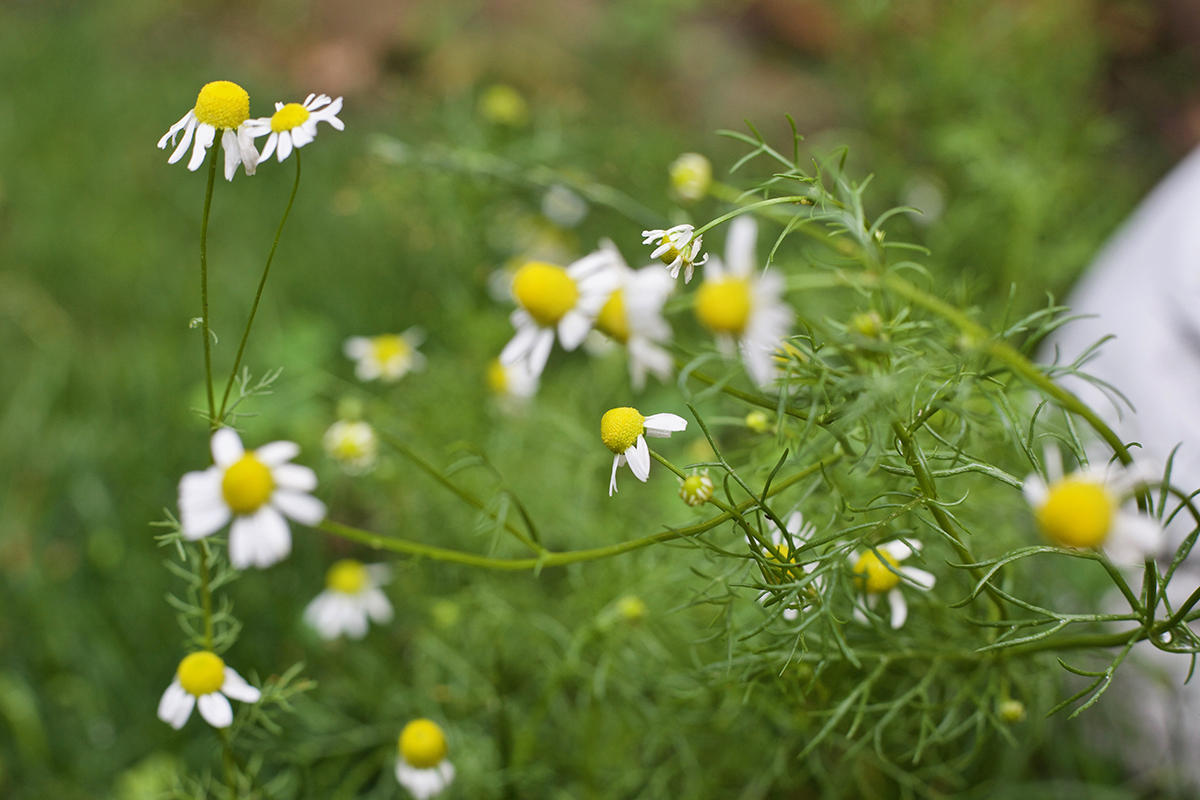
Allow Roman chamomile to grow until the flowering stage, harvest the flowers, and then cut the plant back to create a lush green carpet even after the flowers have gone. You can harvest flowers by hand or with a chamomile rake, depending on how much you are growing. Once you have harvested the flowers and cut back the plant, allow the area to rest for a day and then water. You may feed the plants with diluted fish emulsion up to a few times throughout the growing season to encourage resilience (“Where and how to grow an herbal groundcover,” n.d.).
Use the flowers fresh or lay them flat to dry. Flowers can take longer to dry than leaves. You’ll know they are ready to store when you can pinch the flower head between your fingers, and it falls apart upon the relief of pressure. Store in an airtight container, in a cool and dark place.
Roman chamomile flowers are sedative, antispasmodic, and mildly pain relieving. Used fresh or dry in teas, Roman chamomile helps to soothe digestive gripes, especially when linked to stress. Roman chamomile has a more pronounced bitter flavor and action than German chamomile, but addresses nausea, vomiting, indigestion, and loss of appetite just the same. Through the stimulation of digestive juices and the relaxation of digestive muscles, this plant helps to regulate digestive function (Chevallier, 2000).
Roman chamomile, taken as a tea or tincture can aid in the relief of headaches, even in children. A salve made with Roman chamomile calms irritated skin through anti-inflammatory and anti-allergenic properties (Chevallier, 2000).
Learn inspiring ways to use chamomile in:
A Family Herb: Chamomile Flower
23 Ways to Use Chamomile
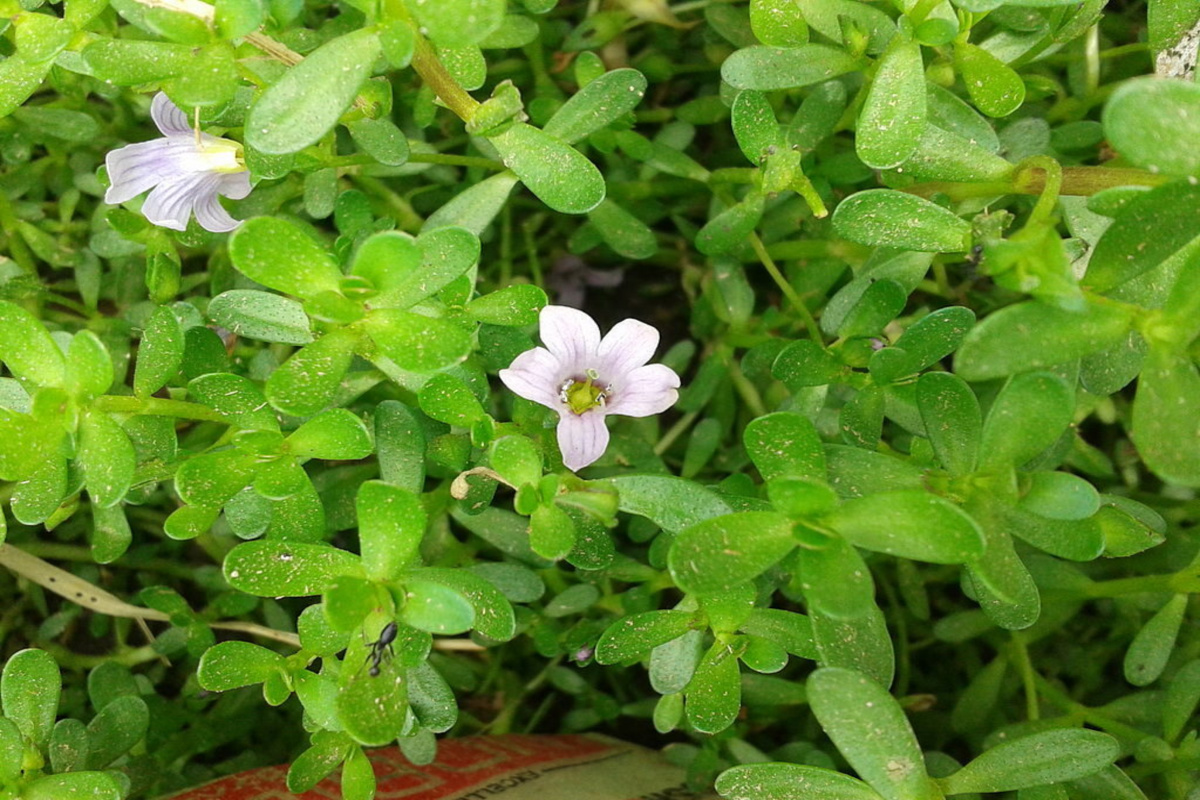
Brahmi (Bacopa monnieri)
Brahmi (Bacopa monnieri), also known as water hyssop, is a creeping succulent that flourishes in the warm, tropical climates of hardiness zones 8-11. Preferring damp or wet areas, bacopa can make a good herbal ground cover option for low spots or near water features. It can grow in sandy, loamy, or clay-heavy soils and prefers spots that get some shade throughout the day (Plants for a Future, n.d.a).
Brahmi is naturally low-lying and won’t require any effort from the gardener to keep it from getting too tall. The succulent nature of this plant gives it a turgidity that can withstand some foot traffic, especially when the foot is bare, but grows best where it will not see regular foot traffic (“Where and how to grow an herbal ground cover,” n.d.). Small leaves are thick, spatula-shaped, and alternatively arranged along the stem. The white to pale blue flowers are small and unassuming, but that doesn’t prevent it from attracting pollinators to the garden (Plants for a Future, n.d.a).
Start your brahmi seed in planting trays or buy starter plants. If starting seeds yourself at home, ready your planting tray with soil, and gently press the seeds into the surface. Keep the soil moist and in a warm spot in your home. Germination can take up to 10 days and the seedlings are very tiny. Allow the seedlings to continue growth in the trays until they are big enough to transplant without damaging the gentle roots and shoots in the process (“Brahmi (Bacopa monnieri), packet of 30 seeds, organic,” n.d.).
Move your brahmi plants to their permanent home, outdoors, when the weather is warm. Place them with a foot of spacing in between, and they will quickly grow together to form a mat. It is important to keep the soil around each individual plant wet to encourage spreading, as they root directly from the stems where they touch moist earth. The root structure is thin and fibrous, making brahmi a good herbal ground cover option in places with small shrubs whose roots go deeper into the soil.
Chew the fresh leaves for a direct and hassle-free way to receive the benefits of this plant. A fresh juice is the traditional preparation, and a tincture can be made using the whole plant if desired.
Beyond the stimulation of digestive juices due to its bitter principles, brahmi has quite the reputation for its effects on the brain. It’s known in the ayurvedic tradition, from which this plant hails, as a nervous system tonic and memory enhancer. Several clinical studies have confirmed its abilities to protect nerve cells against damage and enhance cognitive function (Chaudhry, 2019).
Conclusion,
The possible benefits of herbal ground covers go far beyond what these plants are able to do in the garden or lawn by preventing erosion, sun bleaching, and adding color and texture to the landscape. These are plants that offer a plethora of benefits in your day-to-day life. May they inspire you to continue growing and sharing your gifts, as well.
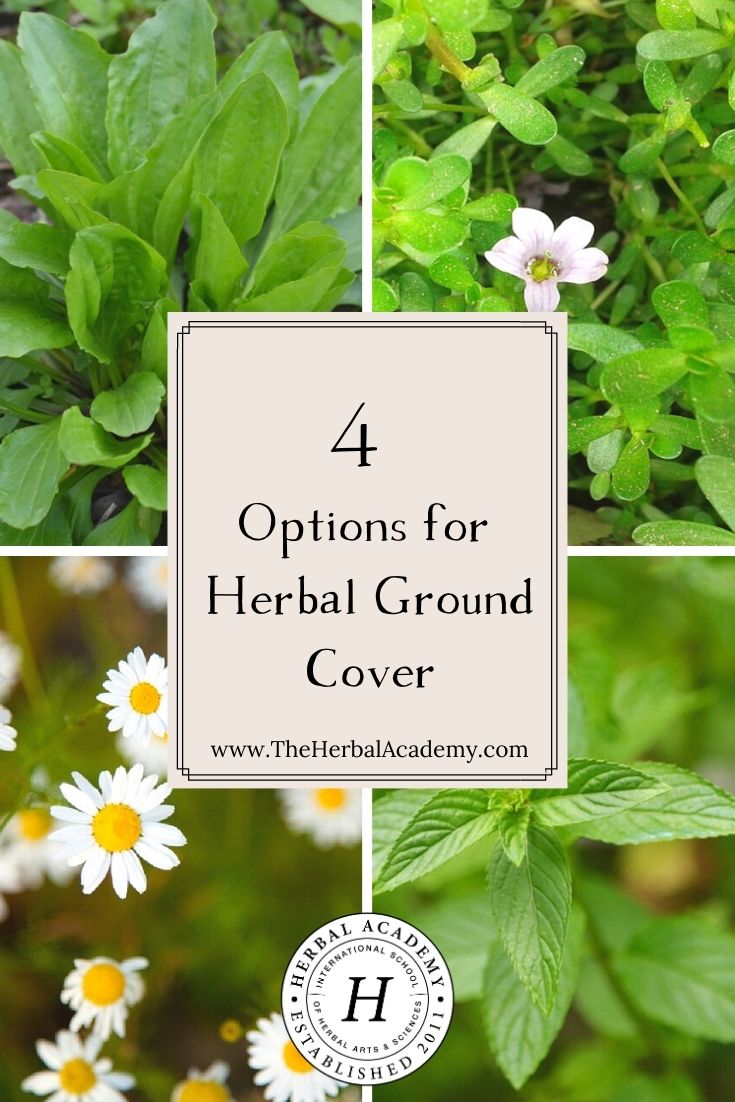
REFERENCES
Beaulieu, D. (2019) What is a ground cover plant? [Website] Retrieved from https://www.thespruce.com/groundcovers-are-low-lying-plants-2131058
Brahmi (Bacopa monnieri), packet of 30 seeds, organic. (n.d.) [Catalogue]. Retrieved from https://strictlymedicinalseeds.com/product/brahmi-bacopa-monnieri-seeds-organic/
Chaudhry, B. (2019) A handbook of common medicinal plants used in Ayurveda. New Delhi, India: Kojo Press.
Chevallier, A. (2000) Encyclopedia of herbal medicine: The definitive reference to 550 herbs and remedies for common ailments, 2nd edition. New York, NY: DK Publishing Inc.
Grant, A. (2020) Planting mint for groundcover: How to use mint for soil retention [Website]. Retrieved from https://www.gardeningknowhow.com/edible/herbs/mint/planting-mint-for-groundcover.htm#:~:text=Because%20it%20grows%20so%20rapidly,might%20just%20fit%20the%20bill
Hartung, T. (2011) Homegrown herbs: A complete guide to growing, using, and enjoying more than 100 herbs. North Adams, MA: Storey Publishing.
Plants For A Future. (n.d.a). Bacopa monnieri – (L.) Wettst. [Database]. Retrieved from https://pfaf.org/user/Plant.aspx?LatinName=Bacopa+monnieri
Plants For A Future. (n.d.b) Database plant search page [Database]. Retrieved from https://pfaf.org/user/DatabaseSearhResult.aspx
Plants For A Future. (n.d.c). Plantago major – L. (n.d.c) [Database]. Retrieved from https://pfaf.org/user/plant.aspx?LatinName=Plantago+major
College of Food, Agriculture, and Environmental Sciences. (n.d.) Broadleaf plantain (Plantago major) [Database]. Ohio State University. Retrieved from https://www.oardc.ohio-state.edu/weedguide/single_weed.php?id=110
Wall Kimmerer, R. (2013) Braiding sweetgrass: Indigenous wisdom, scientific knowledge, and the teachings of plants. Canada: Milkweed Editions.
Where and how to grow an herbal groundcover (n.d.) [Blog]. Retrieved from https://blog.strictlymedicinalseeds.com/where-and-how-to-grow-an-herbal-groundcover/
United States Department of Agriculture. (2012). USDA plant hardiness zone map [Database]. Retrieved from https://planthardiness.ars.usda.gov/PHZMWeb/







